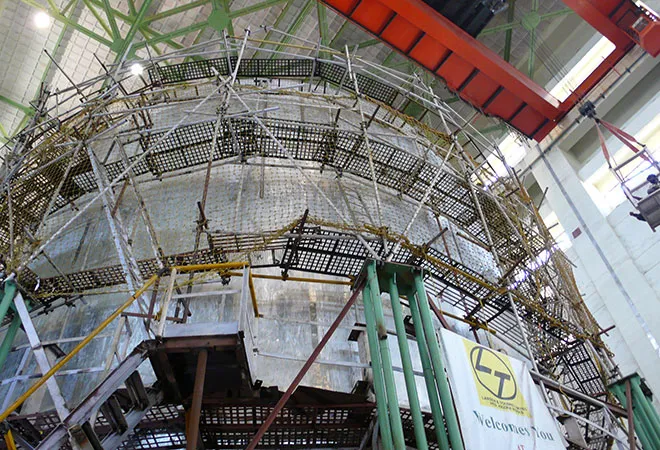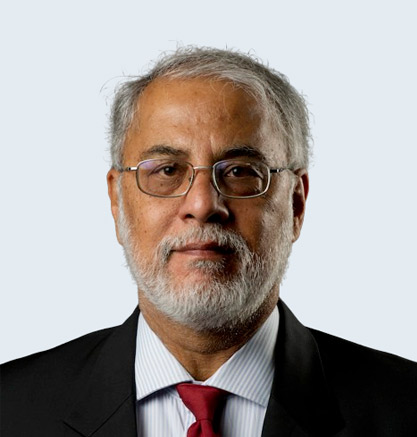The report that the US will help build six nuclear power plants in India should be taken with the proverbial pinch of salt. When it comes to the US, inter-governmental declarations are not how business gets done. It requires working through a labyrinth of terms and conditions with companies and financial institutions. And, the nuclear-reactor business is not too healthy in the US.
The six reactors to be set up in Kovvada, Andhra Pradesh are Westinghouse-designed AP1000 Pressurised Water Reactors (PWR). Westinghouse has just emerged from a Chapter 11 bankruptcy settlement on account of the construction of four AP1000 reactors in Georgia and South Carolina.
The announcement, which came during foreign secretary Vijay Gokhale’s visit to the US, seems aimed at pleasing Washington at a time when bilateral trade ties appear to have hit turbulence. It is also a token genuflection towards the Indo-US nuclear deal of 2008 that was justified by the US desire to promote civil nuclear cooperation. This deal, with its commitment to promote US nuclear reactor sales to India, came unstuck after India passed a stringent liability law that made the manufacturers, rather than the operator, primarily liable for damage in the event of an accident.
India has 22 functioning reactors, most of them pressurised heavy water reactors (PWHRs), which provide three per cent of the country’s electricity. Seven units, one of them a prototype fast breeder reactor, are under construction.
India’s nuclear power sector was coddled by the government because it served the dual purpose of providing the capacity to produce nuclear weapons and also the promise of limitless sources of energy. This was premised on Homi Bhabha’s three-stage plan that involves making fast breeder reactors (FBR) to use plutonium reprocessed from the spent fuel from the first stage PWHR plants.
Stage 2 FBRs will use a mixed oxide fuel to produce more plutonium than they consume.
In Stage 3, thorium would be used to blanket the reactor to yield Uranium 233 for the third-stage reactor, which can be refuelled by abundant natural thorium after its initial fuel charge.
Nuclear energy received the bulk of the government’s research and development (R&D) funding during the 1950-1970 period. It got some 15 per cent in the 1990s, at a time when Indian Space Research Organisation (Isro) got 20 per cent and renewables got less than one per cent. While ISRO achieved world-class launch and satellite capability, despite embargoes, the department of atomic energy found it hard to even scale up the 220 MWe Canadian reactor it had got in the 1960s to 700 MWe. We have just about managed to get one going in Andhra Pradesh’s Kakrapar in 2018. The world norm for power reactors is 1,000-1,500 MWe.
The country was promised a 10,000 MWe capacity by the year 2000, but even now it has only touched 7,000 MWe. After the nuclear deal there was talk of boosting nuclear energy to 63,000 MWe by 2032. But in 2011, following the blow-back from the nuclear liability legislation, this was scaled down to 14,600 MWe by 2020 and 27,500 by 2032. We will be lucky if we meet the 2000 target in 2020.
In contrast to nuclear power, India has usually exceeded its targets, at far lesser investment, in the area of renewable energy. The country’s installed wind-power capacity is 34,000 MW, hydropower 44,000 MW and solar power 25,000 MW, with a target of 100,000 MW by 2022. Wind and solar power have not been provided the kind of investment that has been made in nuclear energy.
Around the world, nuclear energy has taken a back seat because of the risks that reactors bring with them. Three Mile Island, Chernobyl and Fukushima have dampened the ardour of the developed world. The US, which has over 100,000 MWe capacity, stopped issuing licences for nuclear plants between 1979 and 2012. Even now, just two are under construction, while 34 have been shut down.
It is not safety alone that is a concern. The economics of nuclear power is another issue. Huge sums of money go into setting up of power plants. Most face delays and cost over-runs. Operating costs per unit of electricity tends to be higher than alternative energy sources.
There are a range of experimental reactors that promise greater safety and economy but they are yet to reach maturity. China is investing big in new reactor technologies. The stakes are huge. Nuclear technology has always had two faces—the promise of incredible bounty and its enormously destructive capacity.
As of now, India remains fixated on its three-stage plan. We will reach Stage 3 only by 2050 or so; we’re still mainly in Stage 1. Caution is needed, especially since the record of our nuclear R&D and industry is not great. We need to hedge our risks by working on alternatives, not just in the field of nuclear energy, but also renewables, where our performance has been much better.
This commentary is originally appeared on Firstpost.
The views expressed above belong to the author(s). ORF research and analyses now available on Telegram! Click here to access our curated content — blogs, longforms and interviews.

